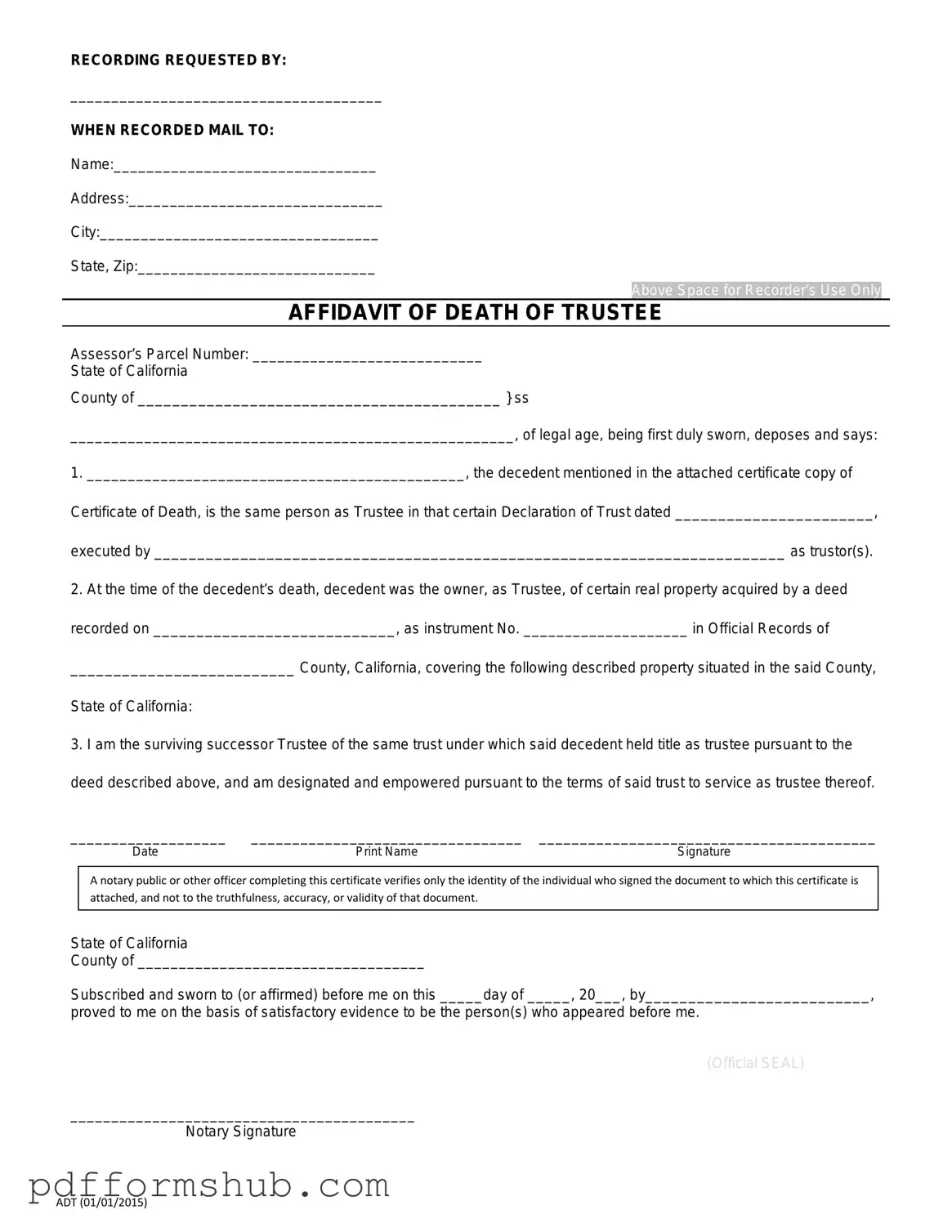Fill in Your California Affidavit of Death of a Trustee Form
The California Affidavit of Death of a Trustee is a legal document used to officially declare the death of a trustee in a trust. This form helps facilitate the transition of responsibilities and ensures that the trust can continue to be managed properly. Understanding how to fill out this form is essential for those involved in trust administration.
Ready to get started? Fill out the form by clicking the button below.
Customize Form
